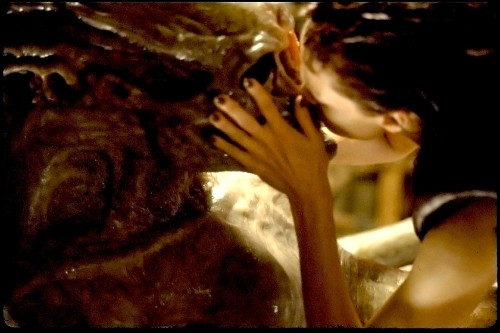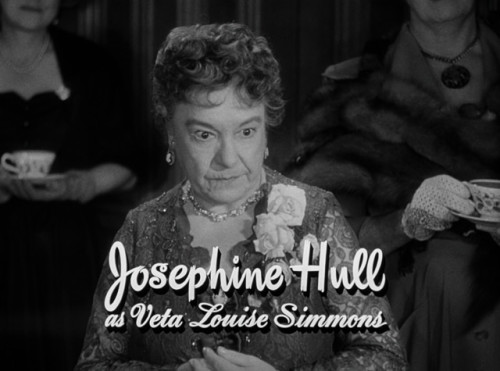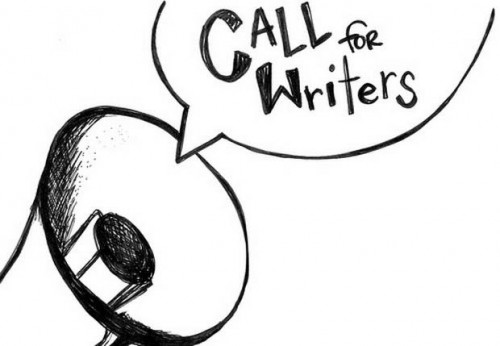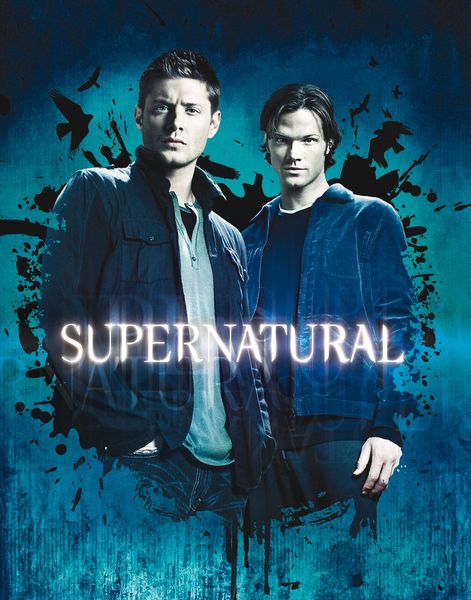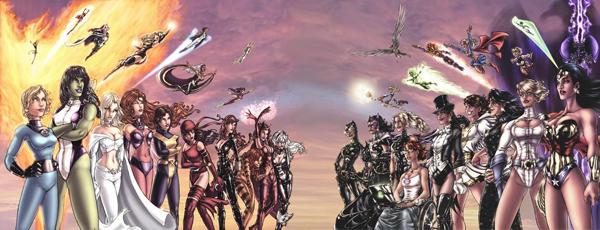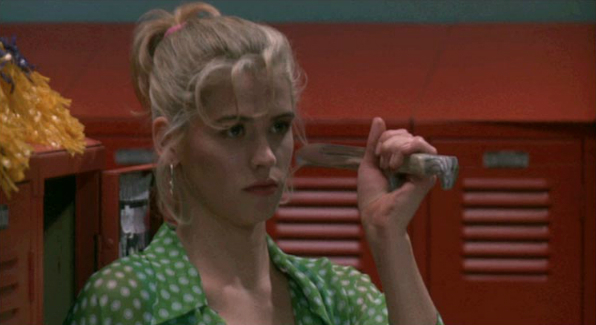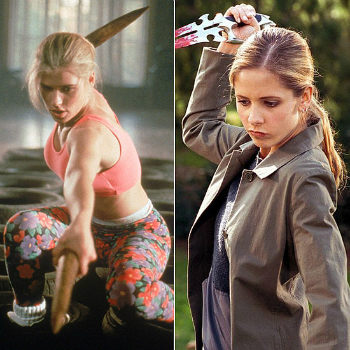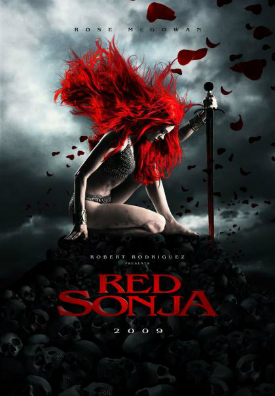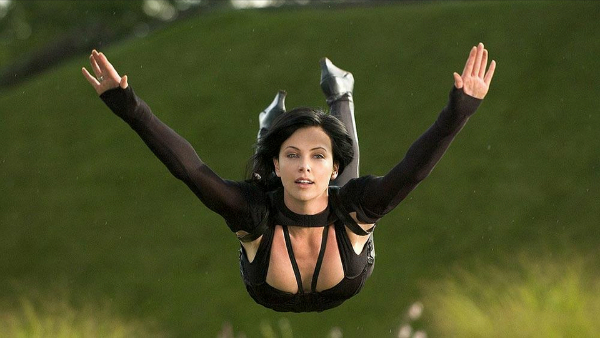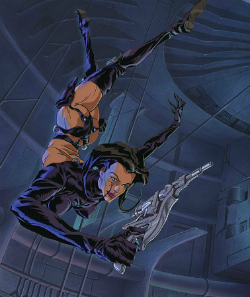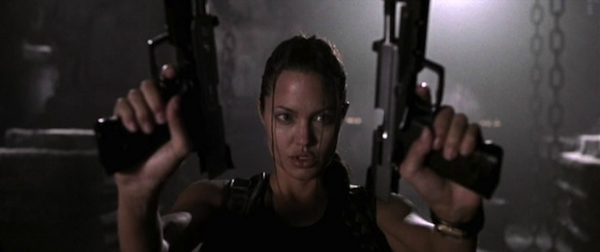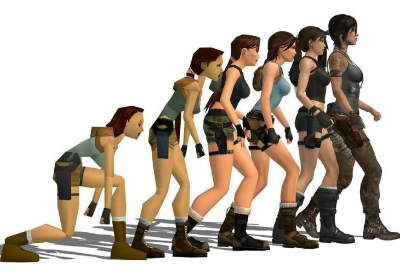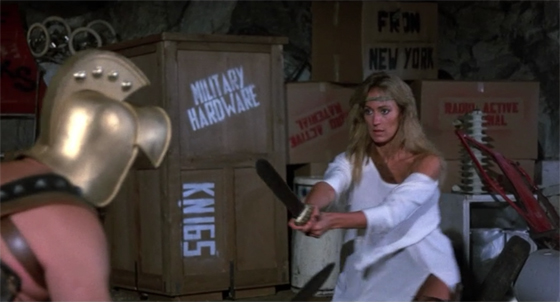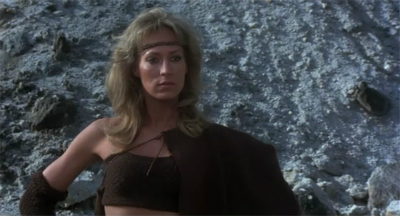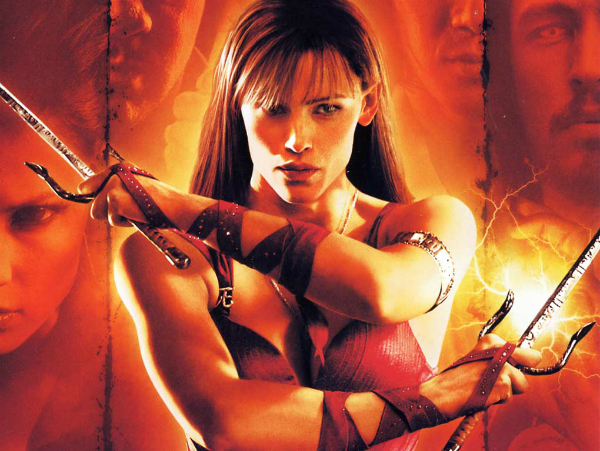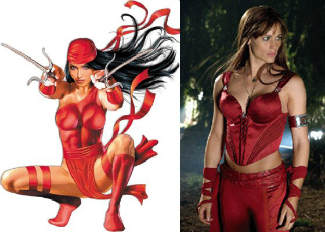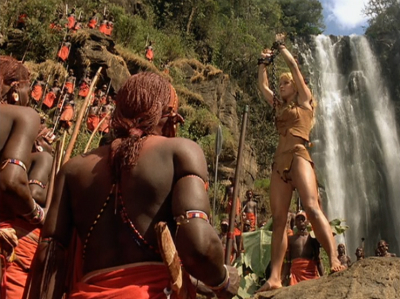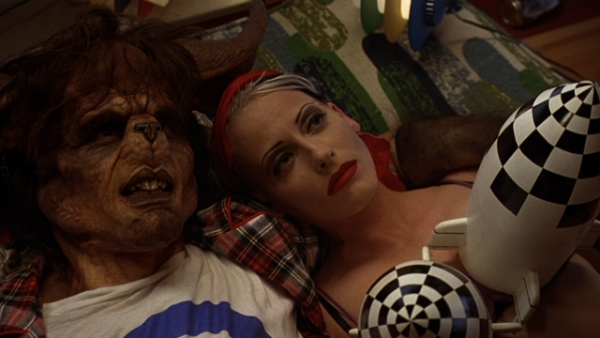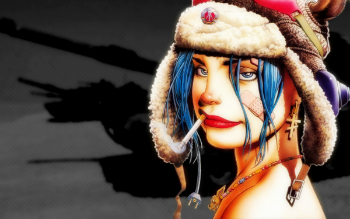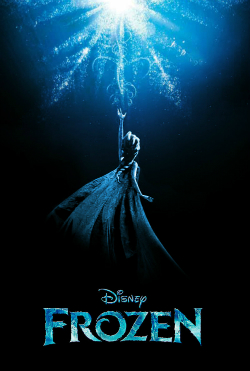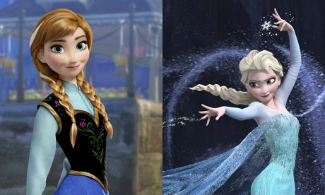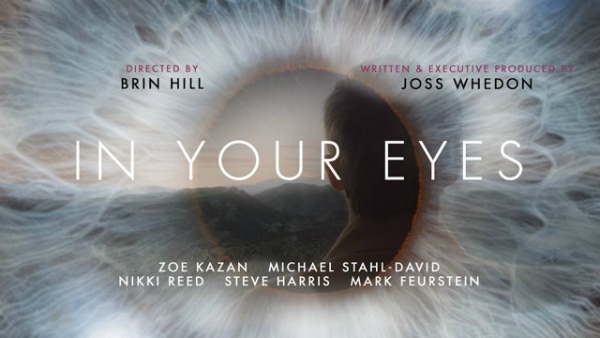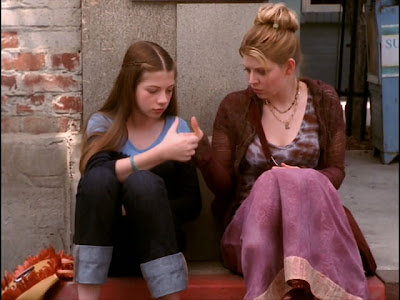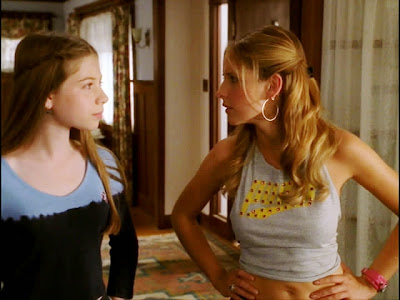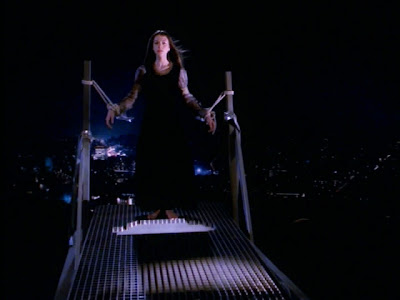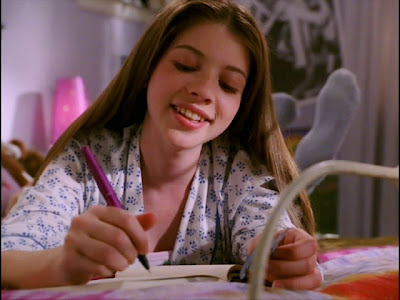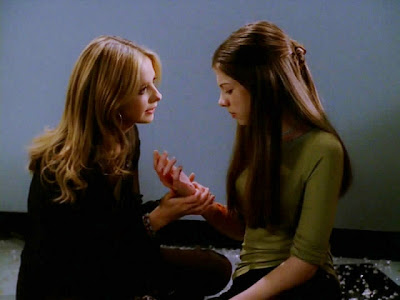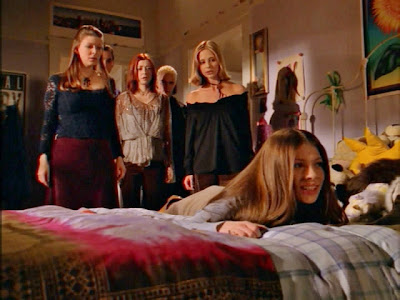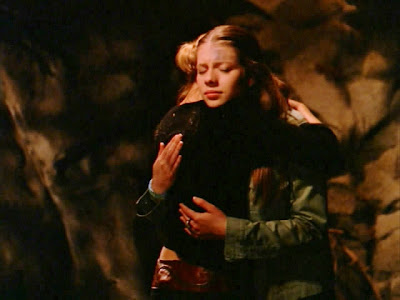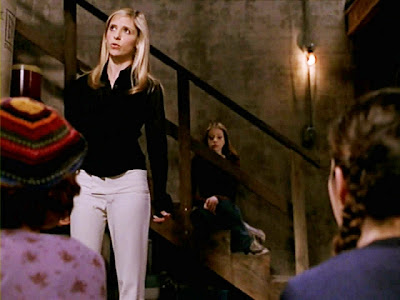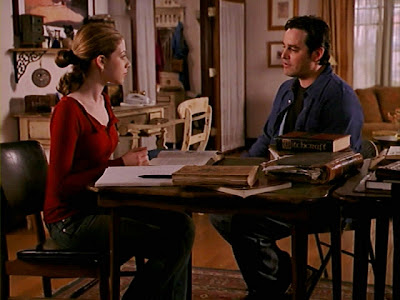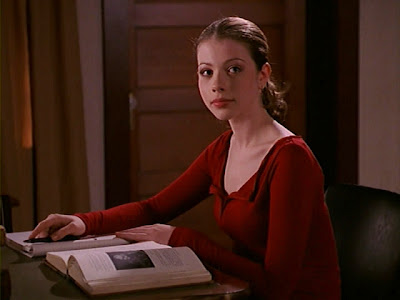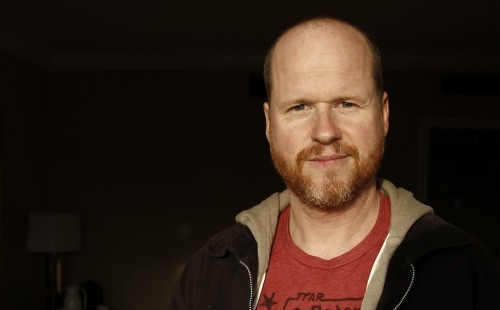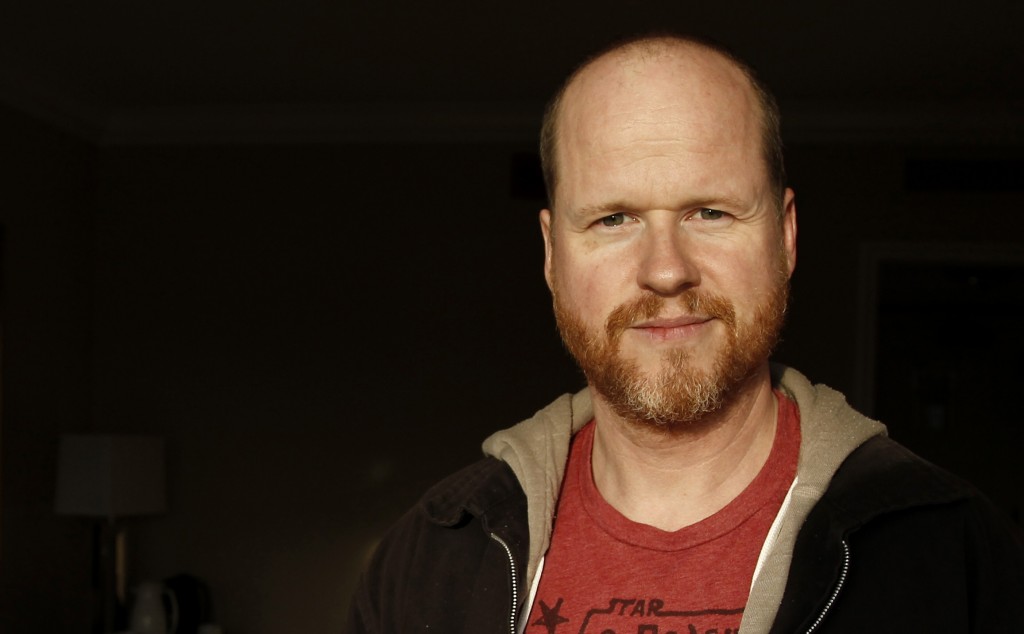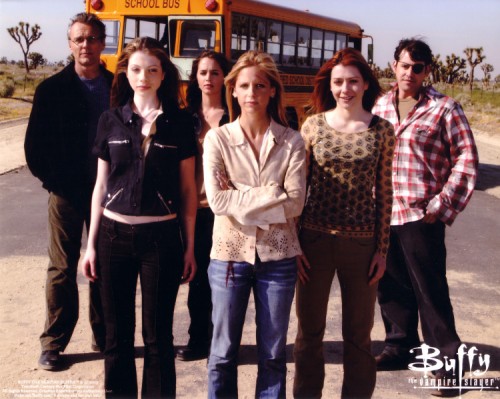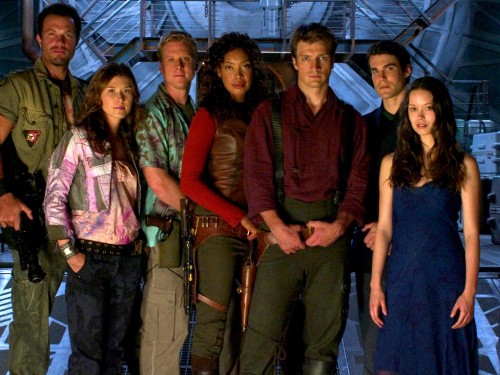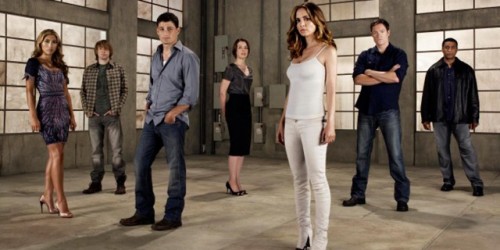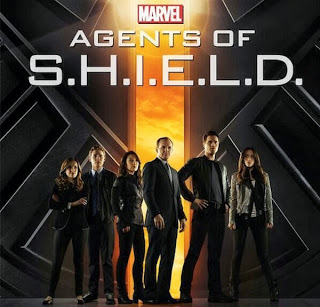
Written by Brigit McCone.
The Alien saga offers some of the most powerful images of bodily violation in pop culture, from the metaphorical rape of the facehuggers to the victim’s resulting fatal impregnation. Ridley “Thelma and Louise“ Scott* fostered male empathy by casting John Hurt as the victim of this violation, while Sigourney Weaver’s badass Ellen Ripley defeated the monster. The sequel, Aliens, saw Ripley voluntarily assume maternal responsibility for a young girl, Newt, and fight an iconic battle against the Alien Queen to save her adopted child. In Alien3, Ripley realized she had been impregnated with an Alien Queen, and made a conscious decision to destroy herself and it. Then, in 1997, celebrated male feminist Joss Whedon scripted a fourth film in the series, Alien: Resurrection, which revived Ripley as an Alien/human hybrid clone.
When her identity is challenged, Ripley/Alien smiles, “I’m the monster’s mother,” equating motherhood with forced cloning in a lab. Realizing that Aliens have escaped, Ripley/Alien grins, later clarifying, “I’m finding a lot of things funny lately, but I don’t think they are.” Merging with the Alien has rendered her emotional responses irrational. As Ripley/Alien is anguished at being forced to destroy a room full of fellow clones, Ron Perlman’s pirate snorts “must be a chick thing”, in a franchise founded on transgressive gender-bending. Ripley/Alien weeps openly at the death of the Newborn, an Alien/human hybrid which has already devoured the brains of two people (including the film’s final person of color), which Brad Dourif’s scientist described as her “beautiful, beautiful little baby.” Whedon and director Jeunet thus systematically demolish Ridley Scott’s original metaphor by consistently representing Ripley’s experience of forced maternity as akin to both chosen motherhood and loss of self, and essentially different from the forced impregnation and reproductive coercion of the male characters.

Maternity may be forced, but motherhood is always voluntary. An adopted mother is a true mother, as Ripley is to Newt. An egg donor, a surrogate or a clone is not automatically a mother, as Ripley is not to the Newborn. Reducing the complexity of motherhood to automatic biology also implies that bad mothers are unnatural, rather than flawed humans, which aspiring writers may wish to explore in this Theme Week. As for Alien: Resurrection, Whedon’s ending was changed and he claims “they said the lines…mostly…but they said them all wrong. And they cast it wrong. And they designed it wrong. And they scored it wrong. They did everything wrong that they could possibly do.” However, three aspects of Whedon’s role as author of Alien: Resurrection still deserve scrutiny. Firstly, that it consistently rewrites and undermines the original feminist purpose of Ridley Scott’s Alien. Secondly, that it is only one of numerous dehumanizing portraits of forced maternity in the work of Joss Whedon. Thirdly, that Whedon’s status as a vocal male feminist does not restrain him from perpetuating this trope.
Sixteen percent of pregnant women surveyed by Lindsay Clark M.D. had been subjected to reproductive coercion (the sabotaging of birth control or the use of threat by male partners to force pregnancy). In a survey of women using family planning services, fully 35 percent of those who experienced partner violence had also been subjected to reproductive coercion. Glenn Close’s Alex Forrest in Fatal Attraction is an iconic representation of terrifying reproductive coercion, but I can think of no equivalent portrayal of reproductive coercion by male characters targeting women, despite its staggering frequency in reality. Nobody wants to confront the possibility that a child might be unwanted, especially by their own mother. However, if we can’t admit that an acid-spitting, brain-eating Alien-child might ever, possibly, be unwanted, our denial has become dehumanizing. Male-authored horror, focusing disproportionately on women as victims of supernatural possession, almost invariably implies that women can be drained of selfhood and controlled by reproductive coercion, supporting the ideology of real-life abusers.
In The Omen, Gregory Peck’s father must confront and attempt to destroy his demon spawn while, in Rosemary’s Baby, Mia Farrow’s mother gently rocks her demon spawn’s cradle with a tender smile. Paternity is an emotional bond mediated by rational judgment, while maternity inevitably entails loss of the rational self. Some female directors have challenged this trope. In Lynne Ramsay’s We Need to Talk About Kevin, a mother’s love is alienated by her child’s sadism, joining the conflicted but humanized mothers of Jennifer Kent’s The Babadook, and Kimberley Peirce’s reimagined Carrie. Meanwhile, Roman “Rosemary’s Baby” Polanski, self-confessed rapist, has stated publicly that the birth control Pill “chases away the romance from our lives.” While celebrated male feminist Joss Whedon probably wouldn’t endorse that statement, his romanticized reproductive coercion nevertheless reflects that ideology.

Sady Doyle has praised Whedon’s Dollhouse for its exploration of the sinister implications of reducing women to manipulable male fantasy. As Doyle argues, Dollhouse can even be read as an interrogation of Whedon’s own role, as a writer who converts living actresses into creations of his fantasy. However, Doyle also highlights problems with the second season episode “Instinct,” which suggests that Echo’s being forcibly imprinted, to believe herself a mother, produces a biological response that cannot be erased, even though the woman’s entire personality can be erased, “because the Maternal Instinct has magical science-defying powers of undying devotion which are purely biological and not at all circumstantial” (Doyle’s words). Although the show’s entire point is the essential creepiness of depriving a human of consent, ‘Instinct’ suggests that the maternal instinct is capable of converting forced maternity into a positive experience. Nor is Dollhouse the only example of this.
Dawn, in Buffy the Vampire Slayer, is conceived by monks reprogramming the characters’ memories and emotions, echoing Dollhouse‘s premise. Since Dawn is an innocent and vulnerable being, Buffy’s decision to protect her is consistent with her established character as a natural rescuer, akin to Ripley’s decision to protect Newt at any cost. However, the show barely allows Buffy five minutes of outrage over the monks’ traumatic violation of her memories and emotional self (without even considering the implications of her fake robot pregnancy in the comics, or Black Widow’s becoming “monster” by sterilization because… dude). Like Echo’s positive experience of forced maternity, Buffy’s maternal instinct towards Dawn effectively cancels out the violation of Dawn’s conception. In the third season of Whedon’s Angel, the evil Darla’s entire personality alters through pregnancy, as she becomes mysteriously infected by the soul of her Prophecyfetus, recalling Ripley’s personality shift through Alien impregnation. Not only is Darla/Prophecyfetus redeemed by an explicitly unwanted pregnancy, but expresses her redemption through self-annihilation, staking herself to allow her baby’s birth.
Self-annihilation is likewise the ultimate expression of Buffy’s maternal instinct, the heroine killing herself for Dawn, her corpse bathed in the hopeful light of a new dawn (subtle). I can’t recall any comparable example of voluntary, fatherly self-annihilation as redemptive in the work of celebrated male feminist Joss Whedon (and even Michael Bay gave us Armageddon). Simon’s sacrifices, as adopted father-figure (and safeword-wielding controller) of sister River Tam, are rewarded with Kaylee’s love in Serenity, while Angel heroically chooses to wipe his son’s memory when paternity becomes too troublesome, and Giles dramatically rejects Buffy when she becomes too independent. Sure, there are complex undercurrents of male self-loathing and idolized female sacrifice going on here, but I can’t see how that actually empowers Whedon’s (routinely mind-controlled) women. As Angel points out in Angel‘s fourth season: “our fate has to be our own, or we’re nothing.” By this measure, Whedon’s women are constantly reduced to “nothing” by maternity.

When it comes to reproductive coercion, nothing beats the treatment of Cordelia Chase on Angel. Already forcibly impregnated by mind-controlling demon spawn in the first season’s “Expecting,” Cordelia agrees in “Birthday” to become half-demon herself, as an act of self-sacrifice to spare Angel from head-splitting visions. She eventually “transcends love” to become an omniscient “higher being” of pure light, but finds herself “so bored” by this power, echoing the vocal dissatisfaction of Whedon’s Ripley, Call, Buffy, Willow, Faith, and River Tam. If Whedon’s superstrong women didn’t all commiserate with each other about the terrible burden of power, they’d barely pass a Bechdel. In Season Four’s opener, Angel is trapped at the bottom of the sea, hallucinating visions of happiness with Cordelia. In one vision, Cordelia pledges her love as self-annihilation, foreshadowing the amnesia inflicted on her when she rejoins Angel, “I can’t remember what it was like, not knowing you”, before Angel vamps and drains her blood. At another vision’s cheerful feast, Cordelia exclaims “kill me now before my stomach explodes,” foreshadowing her next demon pregnancy, in which Cordy’s mind will be possessed yet again by the soul of her Doomfetus, just as Darla/Prophecyfetus and Ripley/Alien were.
Jasmine, the possessing being, forces Cordelia to seduce Angel’s son, Connor, primarily to provoke conflict between the male heroes, but also to conceive Jasmine’s Doomfetus vessel. Appearing in a vision, as the maternal mouthpiece of The Powers That Be, a reproductively purified and ex-evil Darla informs her son, Connor, that the fate of the world now depends on his choice, since Cordelia’s agency has been reproductively annihilated (Darla merely implies that last part). Cordelia is then forced into a coma by the birth of her demon spawn, just as Darla was dusted while giving birth, or Whedon’s Alien Queen decapitated by her Newborn. Meanwhile, Cordelia/Doomfetus has found time to bring forth a Doomsday Beast to destroy the sun (women are great at multitasking), forcing our hero, Angel, to lose his soul for various complex reasons, but mainly to confirm Cordy’s boundless power as mindless maternal mouthpiece. Powerful as she is, Cordelia’s lack of agency nevertheless reduces her, by Angel’s own logic, to “nothing.” Incidentally, Whedon’s treatment of actress Charisma Carpenter did nothing to dispel this impression.

This feels familiar to an Irish viewer. Our feminine ideal, the “Wild Irish Woman,” gave us warrior goddesses, but never prevented pregnant girls being institutionalized as slave labor (a cultural demonizing of unmarried mothers criticized by Dorothy Macardle and Mairéad Ní Ghráda, before Peter Mullan’s The Magdalene Sisters and Stephen Frears’ Philomena drew international attention). Our pirate queen got her nationalist anthem, but our women had their pelvises broken by crippling symphysiotomy until the 1980s without anesthetic, for fear caesareans would encourage use of birth control. We boast history’s second female minister in government, army officer Constance Markievicz, but just last year, a woman raped by the murderers of people close to her underwent forced hydration (she was on hunger strike, becoming suicidal after five months pleading for an abortion) before a coerced C-section (her visa status prevented travel). Believe us, there is no connection whatsoever between celebrating women’s warrior spirit and respecting their reproductive rights. I’m a fan of Buffy. I also understand that teams of writers are involved, though Joss Whedon is ultimately responsible for the content of his television shows. I hate his portraits of reproductive coercion because this ideology repeatedly tortures and kills the most vulnerable women in my country. It’s nothing personal. Images of late-term abortions are commodified by Ireland’s forced maternity lobby, while the faces of suicidal rape victims and the corpses of women who died, denied medically necessary abortions, cannot be shown, ironically out of respect for their personhood; this is why fictional images of forced maternity become a battleground for hearts and minds. Ultimately, this torture of Ireland’s most vulnerable women is also the end goal of America’s forced maternity lobby.
* Yes, I know the rape scene in Ridley Scott’s Blade Runner is problematic. It’s not like the rapid rise in ass-kicking heroines was matched by a rise in female authorship. Time for a “Microscope on Male Feminists” feature?
Brigit McCone writes and directs short films and radio dramas. Her hobbies include doodling, ducking and covering in anticipation of Whedonite backlash.
